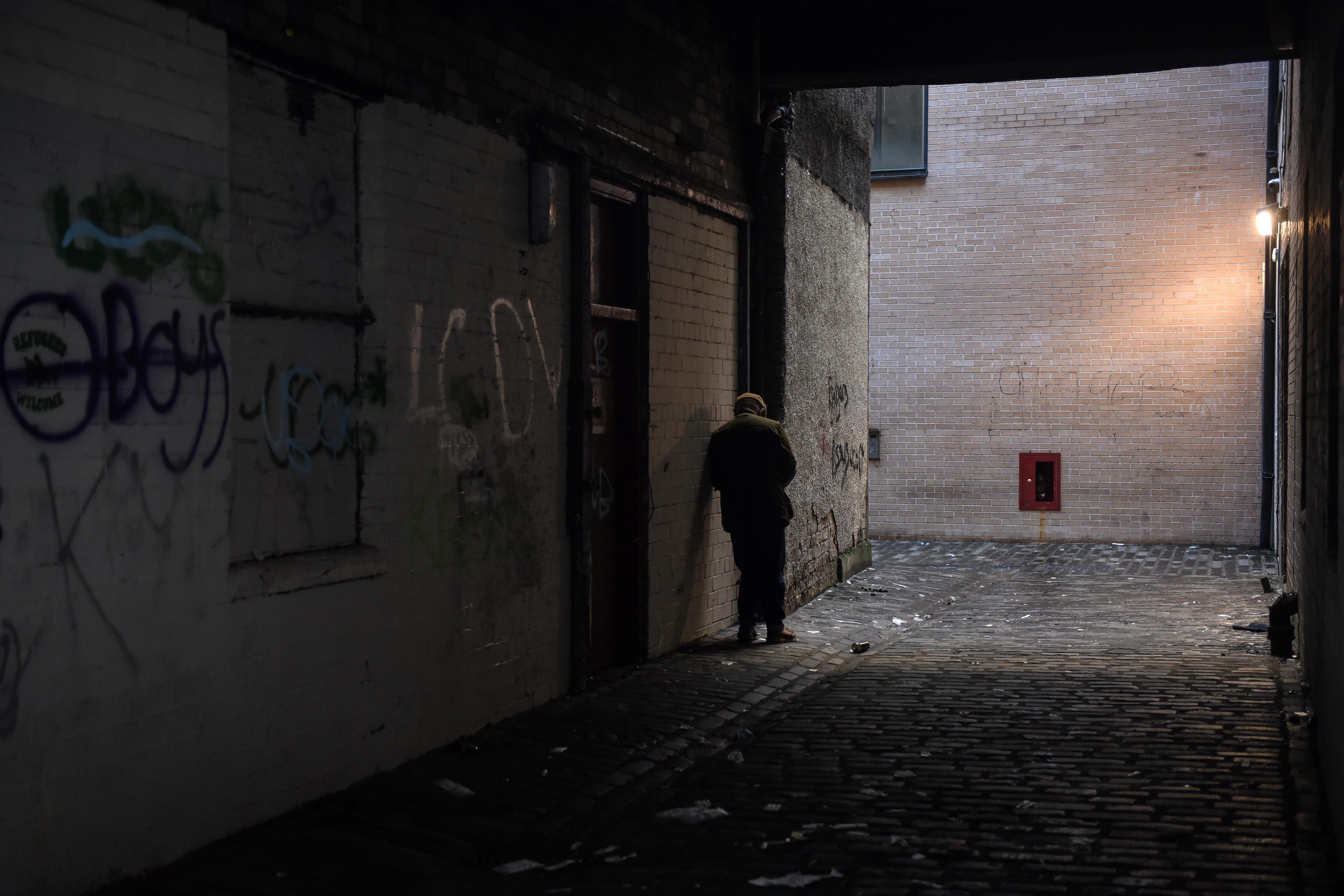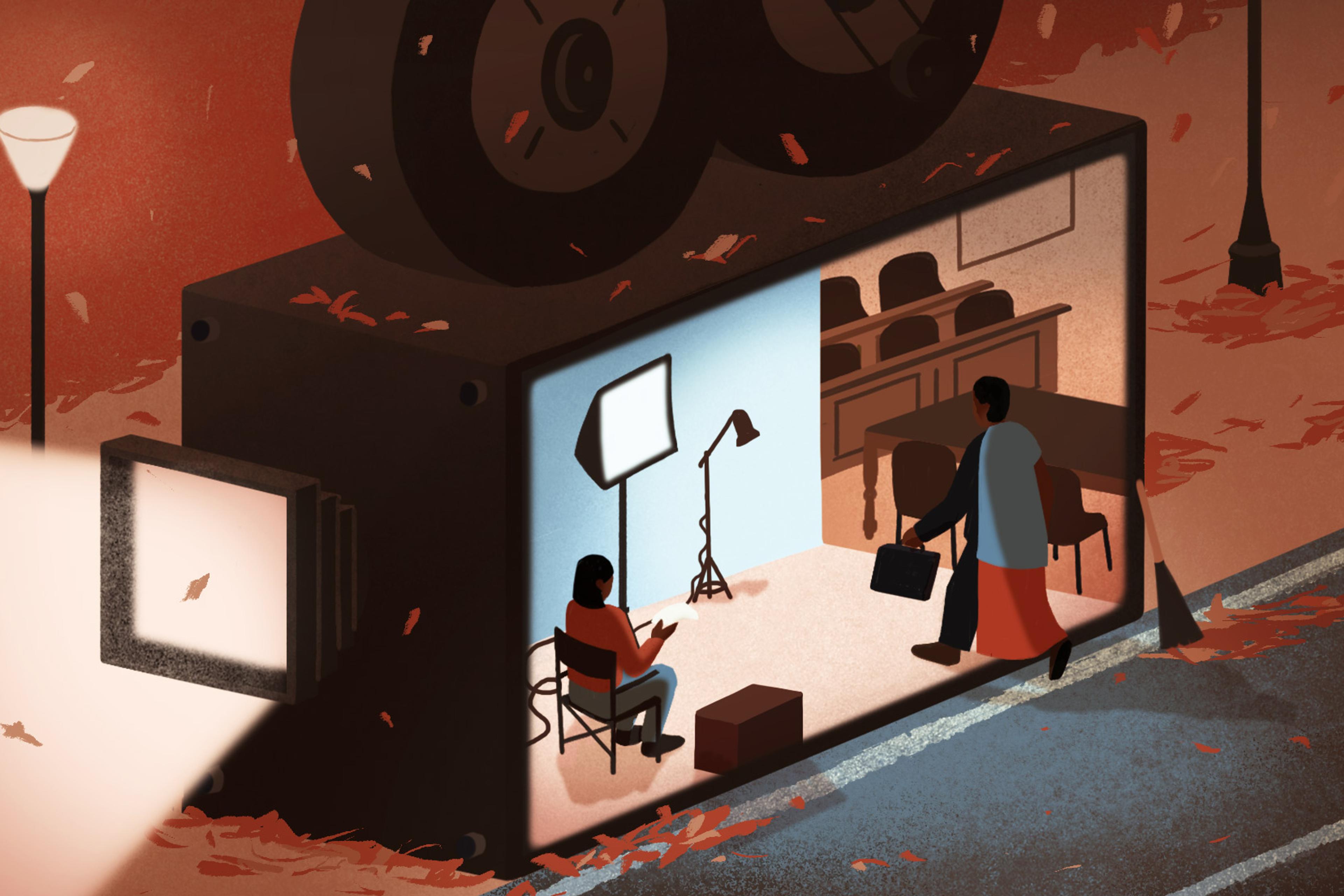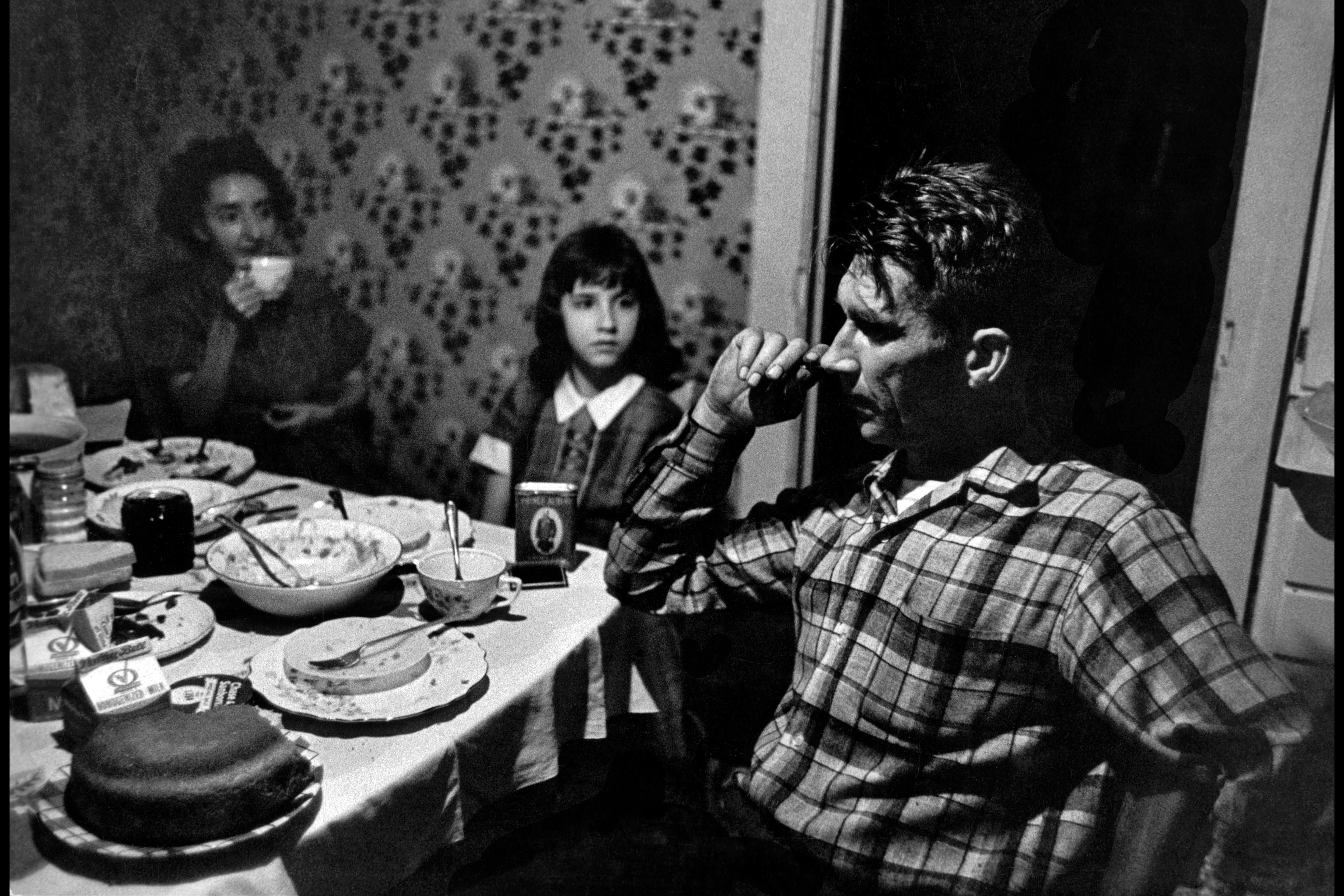Barut was a heavy user of heroin substitutes and crack when we met in Paris in 2014. He’d grown up in what he called a ‘broken home’ in Bulgaria, and started with hard drugs early. Heroin then caught him during construction jobs in Spain and later in Paris. Having gone through another unsuccessful rehab programme just before we met, Barut spent most of his days at the Gare du Nord, Europe’s busiest train station. His life revolved around drugs.
His mornings often started just outside the city centre, in an underground parking lot or abandoned train. Barut would always try to have some methadone to hand, the most common medical heroin substitute. If there was nothing left over from the night before, the heat was on. As soon as Barut woke up, he’d rush back to the Gare, where he earned money by begging. On an average day, he needed to make between €40 and €50, though he’d need considerably more to score crack (which went for €15 a dose, lasting mere minutes). Barut mostly consumed prescription opioids he bought on the street for around €8 a pill, and supplemented his drug-buying with free methadone from a local prescription centre.
The need for generating funds kept Barut busy and created a repetitive cycle of begging, scoring and consuming – often repeated a dozen times a day or more. The physical urgency of withdrawal and its threatening consequences drove Barut’s daily routine. Over several years of anthropological research and ethnography, what we observed with Barut and many others in the US, the UK and France was that addiction is a cyclical rhythm, a strict and dominant hamster-wheel imposed on them by a substance. This is what we call addiction time: a cyclical temporality that drugs impose on the person who takes them, catching them in a perpetual cycle. It implies quite different ways of escaping addiction, compared with those put forward by the prevailing medical model.
Barut is one of almost 270 million people around the world who consumed drugs in 2018, a 30 per cent increase on the 10 years before. Close to 13 per cent of these people have a substance abuse disorder, a condition that affects the person’s brain and behaviour such that they have little control over their consumption of drugs. Groups such as people sleeping rough or those who are homeless are hit particularly hard by addiction: according to the Mental Health Foundation, the majority of homeless people struggle with substance abuse (more than 60 per cent) causing a dangerous number of deaths (eg, more than 30 per cent in the UK, according to a government report in 2019).
Today, the medical approach to addiction uses the lens of illness and disease to cast ‘the addict’ as impaired at the level of their biology and chemistry, in their body and brain. The solution that follows is simple: pharmacological treatment. It justifies sustaining patients on external stimuli in strict treatment routines, such as methadone maintenance. ‘Treatment’ and ‘recovery’ are often understood in numerical terms – through the decreasing ‘titration’ of methadone doses over time, the number of times a person shows up to medical appointments, the number of days since they last used. This standardised calculation of recovery is a direct successor to forms of regulation, surveillance and racism that forms part of the so-called ‘war on drugs’.
By contrast, viewing addiction as something that’s cyclical not only assumes a different kind of person taking the drugs – it also suggests other treatment options. Addiction time, as we conceive it, cuts you ‘out of time’; it involves a loss of a sense of time and a replacement of time, as the anthropologist Kelly Knight and other scholars have documented. People like Barut who consume crack and inject heroin (or prescription opioids and fentanyl) are often ‘caught’ in a cyclical, all-encompassing rhythm. They’re forced – by their addiction – to focus on the procurement and consumption of the drug in the present. The anthropologists Philippe Bourgois and Jeffrey Schonberg found a similar pattern and rhythm in their long-term study of injecting-heroin users in San Francisco; they conclude that their informants
have subordinated everything in their lives – shelter, sustenance, and family – to injecting heroin. They endure the chronic pain and anxiety of hunger, exposure, infectious disease, and social ostracism because of their commitment to heroin.
Proposing a complementary, cyclical view of the temporality of drug use has helped us understand the treatments we observed that don’t fit the medical model. One of those is ear acupuncture, a practice that’s become increasingly widespread since the 1970s as an option for people who use drugs. Sam, one of our interviewees in the UK, received his first treatment in 2000 in a clinic near London. He remembers:
I just had this moment of, ‘Oh God, I just hate being stuck in this loop, you know.’ I just had this ‘Eureka! I’ve had enough of this.’ I just wanted some change. I wanted to move from all that. And that’s when I went to have my first treatment. So, yeah, it’s quite life-changing for me.
Sam learned about a five-point ear acupuncture treatment known as the National Acupuncture Detoxification Association (NADA) protocol from his doctor’s office. The NADA protocol was originally developed in New York City in the 1970s as an empowering community-based response to the war on drugs. Used for managing withdrawal symptoms, people report that the five-point protocol can also help with conditions such as anxiety and post-traumatic stress disorder.
Sam’s first treatment was ‘unremarkable’ yet he decided to stick with it because he ‘had nothing better to do at 10am on Monday and Wednesdays’ – the times the clinic was open. A few months later, he began volunteering, stacking chairs and pouring tea. Shortly after, he signed up for training. Twenty years later, Sam has been a trainer and acupuncturist for nearly all of the past two decades, working from the clinic where he received his first treatment. He no longer uses hard drugs, and occasionally enjoys a beer or a smoke.
His story isn’t a simple, linear path from addiction to acupuncture. Sam speaks openly about being ‘stuck in a loop’, about moving back and forth between drugs and interventions. Prior to acupuncture, he’d tried methadone which hadn’t really helped:
Since I finished the [methadone] course, I started using again anyway, so it wasn’t nearly, well, it keeps you in the loop, do you know what I mean? Someone wants to move off heroin, and you give them a heroin substitute… You’re still, you know, you’re still taking something.
How was acupuncture more effective than methadone for Sam? Instead of seeking biomedical explanations, seeing addiction time as cyclical helps us grasp how acupuncture can be a route out of the endless loop of scoring and getting high. Acupuncture provided an alternative timescape in which Sam could immerse himself: its practical relief benefits as well as the Chinese medicine theories of the body naturally healing itself made sense to him, and he found an accepting community of like-minded patients and patient-turned-practitioners.
Effective interventions appear to proceed from a rupturing with the old cycle, followed by an experimentation with the new one, before finally being able to root and establish a new (temporal) routine. This process was true with our interviewees who used acupuncture in London, as well as those at a day centre for alcohol addiction in Paris. The first step comes with leaving one’s established community behind; this ‘ruptures’ the cyclical addiction time, prompting the ‘Eureka!’ moment that Sam describes. Users then encounter and experiment with different kinds of alternatives – from other drugs to trying methadone and going through rehab – a process that can take years and entail various non-linear loops back into and out of addiction time.
To move beyond addiction, a person’s desire to change their life isn’t enough. The wish to live differently must be supported with interventions that can be adapted to individuals, as well as providing hope for a better future. Though not necessarily ‘mainstream’, acupuncture was at least familiar to Sam and others as a healthcare practice. Yet it was also novel, and unlike anything resembling the technologies of Sam’s addiction time. Methadone, similar in physical appearance and in its neurochemically based rationale of addiction, fails to meet this criterion for many people who use drugs.
Once the ‘right’ practice has been identified through experimentation, a new routine can be established around the structure-giving practice. Some acupuncture clinics are open daily for extended hours, allowing people to get acupuncture instead of seeking drugs whenever they feel a craving. From the stability of weekly acupuncture treatment through to the course of study, training and his own practice, Sam began to root himself in a new timescape that was connected to a future – that is, as a practitioner of acupuncture. This remaking of time was made possible by a new social world in which Sam met people with similar backgrounds – a fellowship often described as a key part of Alcoholics Anonymous too.
We’re not proposing to entirely replace the medical model of addiction, which after all has led to important and necessary benefits for many people who use drugs (such as methadone maintenance programmes and safe injection facilities). However, we believe that a complementary view of the cyclical, all-encompassing nature of addiction time is vital, and illuminates why certain ‘treatments’ might work better than others. As Barut’s and Sam’s experiences suggest, these alternatives deserve to be taken seriously.








